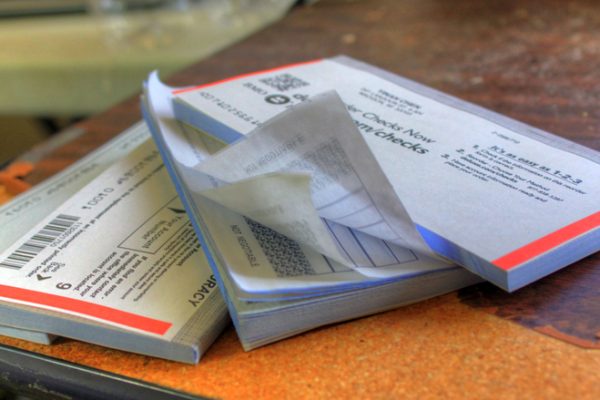

Finance
What Is Coinsurance: All You Need To Know
Modified: September 6, 2023
Coinsurance, deductible, and health insurance, in general, can be confusing. Find out what is coinsurance and how it works in health insurance.
(Many of the links in this article redirect to a specific reviewed product. Your purchase of these products through affiliate links helps to generate commission for LiveWell, at no extra cost. Learn more)
Maintaining good health is a fundamental part of being alive. Unfortunately, it’s also an expensive part of humanity. Of course, healthcare should always be a financial priority. But there are some procedures we’re unable to anticipate despite how well we take care of ourselves.
These procedures might incur a large amount of money that we don’t have on hand. Luckily, health insurance exists. It’s always a good thing to stay proactive and invest in important things like health insurance.
However, health insurance doesn’t cover the entirety of medical costs. In a health insurance plan, the consumer and the insurance provider split the costs up to a certain point, after which the insurer must cover the full cost.
One of the features of a health insurance plan involving cost-sharing is coinsurance. But before we tackle what is coinsurance and why you need it, we must first understand how health insurance works.
How Health Insurance Works

Photo from wallpaperflare.com
Legally, health insurance should cover these ten essential benefits:
- rehabilitative and habilitative care
- outpatient care
- laboratory services
- maternity and newborn care
- paediatric services
- surgery hospitalisation and overnight stay
- preventive care
- mental health and substance use disorder services
- prescription medication
- emergency services
As previously stated, health insurance follows a cost-sharing set-up through the use of some of the major features in a health insurance plan such as the coinsurance. Let’s take a look at these other features to better understand how coinsurance works.
Premium

Photo from wallpaperflare.com
The premium is the amount you pay every month for your health insurance plan. The premium amount depends on the plan you choose. Often, the premium price affects the price of the other features.
For example, high coinsurance and high maximum out-of-pocket usually means a lower monthly premium and vice versa.
Deductible
Since, in a health insurance plan, the insurance provider does not pay for the entirety of your yearly medical costs, you have to pay a certain portion of these costs from your pocket. The deductible is one of these out-of-pocket payments. Before your insurance kicks in, you must first be able to hit your deductible. And your deductible restarts every year.
This means that whether you’ve used up your total deductible in the past year or not, at the start of next year, the amount will restart to what is stated in the plan. To better comprehend what a deductible is and how it works, let’s take a look at an example.
Let’s say your insurance plan dictates a yearly deductible of $500. This means that you have to consume this amount before your insurance provider starts covering the costs. Let’s say your first medical bill for the year is $200. Since it’s less than your deductible, you are responsible for paying the full amount. So now, the remaining deductible is $300.
Now, let’s say the next medical bill for that year is $700. Since you still have $300 of deductibles, you’re going to pay that amount for your medical bill. With the deductibles gone, you are left with $400.
The insurance now kicks in at this point, and your insurance provider will help cover the $400. But they will not necessarily pay the full $400 since you might need to pay for the copay and coinsurance. And at the start of the next calendar year, your deductible will be $500 again.
Copayment

Photo from piqsels.com
After hitting deductible, medical costs will be split between you and the insurance provider. Copayments or copay is one of the ways to do this. Copayments have a flat rate depending on the specific service or prescription. For example, the flat rate for a check-up would be different from the flat rate for prescription medication.
However, it is fixed in the sense that whether the check-up amounts to $100 or $150, you will still pay the same copayment price. Let’s say your copay is $30 for a check-up, then this is the amount you will always pay, regardless of the check-up bill given.
The copayment, however, doesn’t necessarily start once the deductible is hit. Sometimes, the copayment is already in play, even before hitting the deductible, on some services like prescription medicine.
Maximum Out-of-Pocket
The maximum out-of-pocket or out-of-pocket limit is the most you will need to pay for healthcare in a year. This does not include payments that go to the premium.
The out-of-pocket limit includes payments from the deductible, copay, and coinsurance. Once you’ve reached this limit, you no longer have to pay for these out-of-pocket payments and the insurance will cover the full costs.
The maximum out-of-pocket is there to protect the consumer, making sure that what the insurance provider is asking them to pay is not too much. Usually, if the premium is high, the out-of-pocket limit is low.
What Is Coinsurance?
Now that we’ve covered the other major features in a health insurance plan, let’s talk about coinsurance. Coinsurance is the percentage of costs the consumer is responsible for after hitting the deductible.
Like the copayment, coinsurance is one of the ways the consumer and the insurance company split the healthcare costs. Unlike copayment, coinsurance is not a fixed amount, but rather it is a fraction of the total costs. And the percentage remains the same regardless of the service.
How Coinsurance Works

Photo from Pixabay
To truly understand how coinsurance is applied in health insurance plans, let’s take a look at an example. Let’s say you’ve already hit your deductible, and your coinsurance is 20%.
If you availed of a healthcare service covered by your insurance and got billed $800, the amount you’re supposed to pay for coinsurance would only be $160, while the health insurance would be responsible for paying the remaining $640.
However, it’s not always the case that you only have to pay for the coinsurance. If the service availed has a copay, then you would have to pay the coinsurance on top of the copayment.
Upon reaching the out-of-pocket limit for that year, you no longer have to pay for both coinsurance and copayment. The insurance provider would have to shoulder the full cost of the healthcare services availed for the remainder of the calendar year.
The Other Kind of Coinsurance
Although more commonly known in the health insurance industry, coinsurance also exists in property insurance. The coinsurance clause in property insurance serves to penalize the insured if they fail to insure the property according to the declared coinsurance percentage.
The purpose of property insurance is to protect businesses in the case of huge losses caused by property damage or catastrophes. With the coinsurance clause in place, businesses who would like to save money and avoid further expenses by going for lesser insurance would be encouraged to insure the property at the value of its replacement cost or near it.
It is advised to avoid skipping out on appropriate property insurance because insuring the property at a lower cost might lead to insufficient funds when property loss is experienced.
The coinsurance clause will only be in effect at the event of property loss. During a loss, the insurance limit and the required amount to be used for insurance based on the coinsurance percentage are compared and must have a ratio equal to or greater than one, else, a penalty will be given.
How Property Coinsurance Works

Photo from pxfuel.com
To better understand how coinsurance in property insurance works, let’s look at an example. Let’s say you have an 80% coinsurance declared in your property policy with $5,000 deductible. The replacement cost of your property is one and a half million.
Therefore, you are required to purchase property insurance amounting to $1.2 million or more. But since you find that amount too big, and would want to save some money, you only purchase insurance worth $900,000.
An earthquake happens, and the replacement cost is found to be $500,000. But since you did not reach the coinsurance percentage, the ratio between the insurance limit ($900,000) and the required amount based on coinsurance percentage ($1.2 million) would be less than 1 (0.75).
The insurance will only give an amount equivalent to the replacement cost ($500,000) multiplied by the ratio (0.75) minus deductible ($5,000). So the amount covered by the insurance is only $370,000 (500,000 x 0.75 = 375,000 – 5,000 = 370,000). You will also get a coinsurance penalty amounting to $125,000.
You compute the value of the penalty by multiplying the replacement cost ($500,000) with the multiplier, 0.25 (1 – 0.75). So by violating the coinsurance clause, you are not only unable to receive the full replacement cost, but you also have to pay a hefty penalty.
Conclusion
Coinsurance in health insurance is the percentage of your medical bill that you need to pay out-of-pocket and is only in effect once you hit the deductible. You pay the coinsurance on top of the copayment, and the insurance will cover the rest.
When it comes to property insurance on the other hand, the coinsurance clause serves to protect businesses by making sure they have adequate insurance in case of property loss.













